Catfish Tank
When the news came, I was elated and saddened. Ike's Quarter Café was closing.
While I was happy for Ike and his family, I was distraught at the thought of no longer being able to get my fix of the delicious food served at the café; and most specifically, I mean the blackened catfish po' boy sandwich with a side of cajun fries.
Since I am not without a kitchen and a small semblance of kitchen skills, the obvious solution to the quandry is to make blackened catfish po' boy sandwiches at home… and that is what I set out to do.
Step 1: raise catfish at home Sure, I could go to the store and buy catfish fillets, but raise catfish at home sounds like a fun way to ensure food security in the future.
In order to raise catfish, I will need a water tank with some sort of covering.
Frame to cover the tank
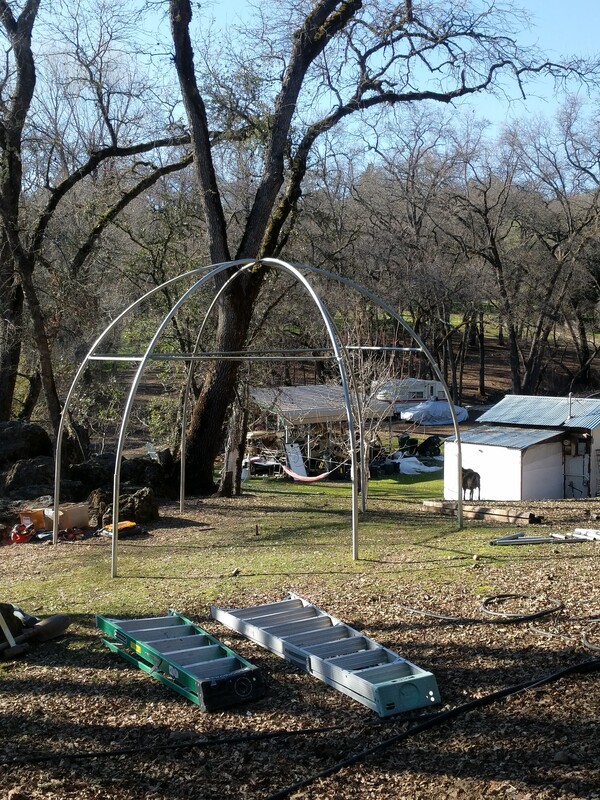 In the scrap pile were 6 old greenhouse poles bent with a 7' radius. Put together
with a single central point gave me a 6 sided "round" structure in which to put
the fish tank. I call it the Catfish Barn.
In the scrap pile were 6 old greenhouse poles bent with a 7' radius. Put together
with a single central point gave me a 6 sided "round" structure in which to put
the fish tank. I call it the Catfish Barn.
Level a pad for the tank
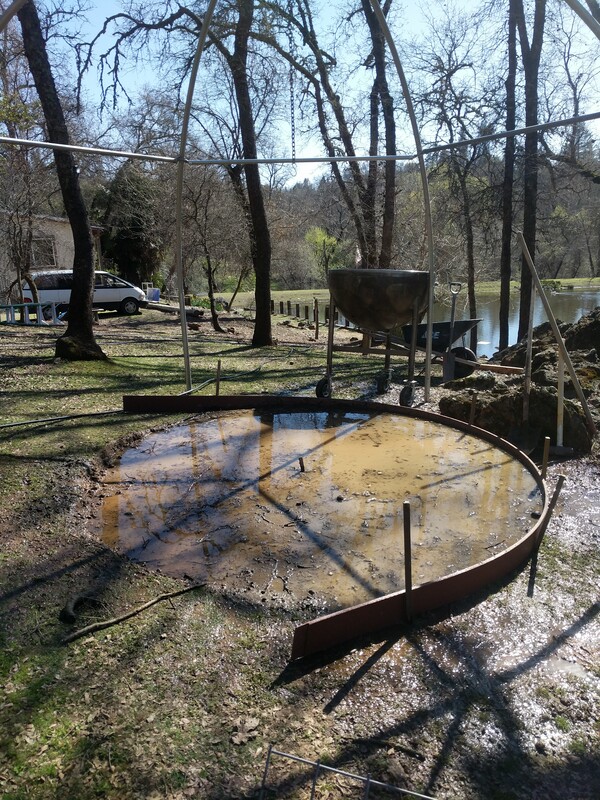 In the center of the barn, a circle was scribed on the ground to represent the size
of the tank (plus another 6" or so). Plastic bender board was installed on the downhill
side of the tank circle, and then water, shoveling, and raking, turned the clay/dirt
within the circle into a liquid gooey muck that was leveled thanks to gravity.
In the center of the barn, a circle was scribed on the ground to represent the size
of the tank (plus another 6" or so). Plastic bender board was installed on the downhill
side of the tank circle, and then water, shoveling, and raking, turned the clay/dirt
within the circle into a liquid gooey muck that was leveled thanks to gravity.
Framing the tank
 The frame of the tank is made of 2 16' cattle panels tied together with bailing twine to make a short wide cylinder
in the center of the Catfish Barn. The bottom wire of the panels was cut off, and this allowed the panel to be sunk
about 4" into the ground.
The frame of the tank is made of 2 16' cattle panels tied together with bailing twine to make a short wide cylinder
in the center of the Catfish Barn. The bottom wire of the panels was cut off, and this allowed the panel to be sunk
about 4" into the ground.
Lining the tank part 1
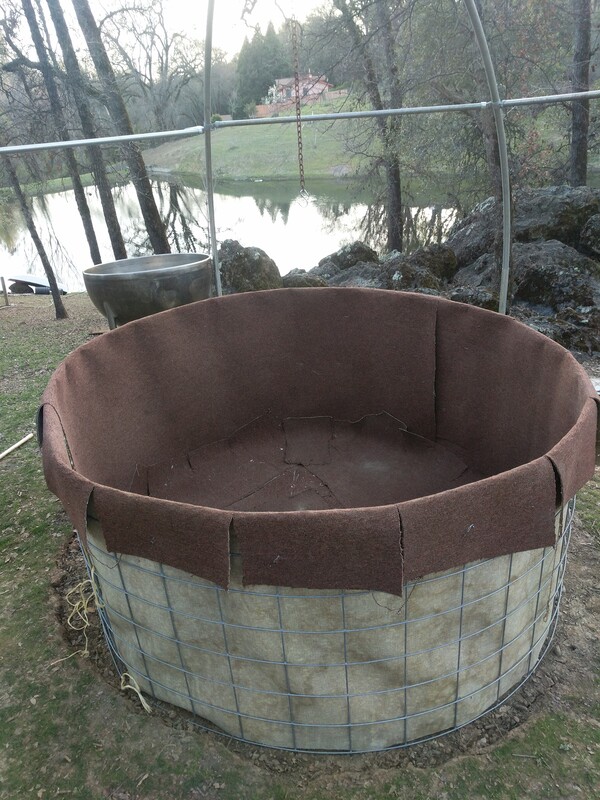 The inside of the tank frame was lined with carpet remant salvaged from the dumpster at Bob's Discount Carpets.
The inside of the tank frame was lined with carpet remant salvaged from the dumpster at Bob's Discount Carpets.
Lining the tank part 2
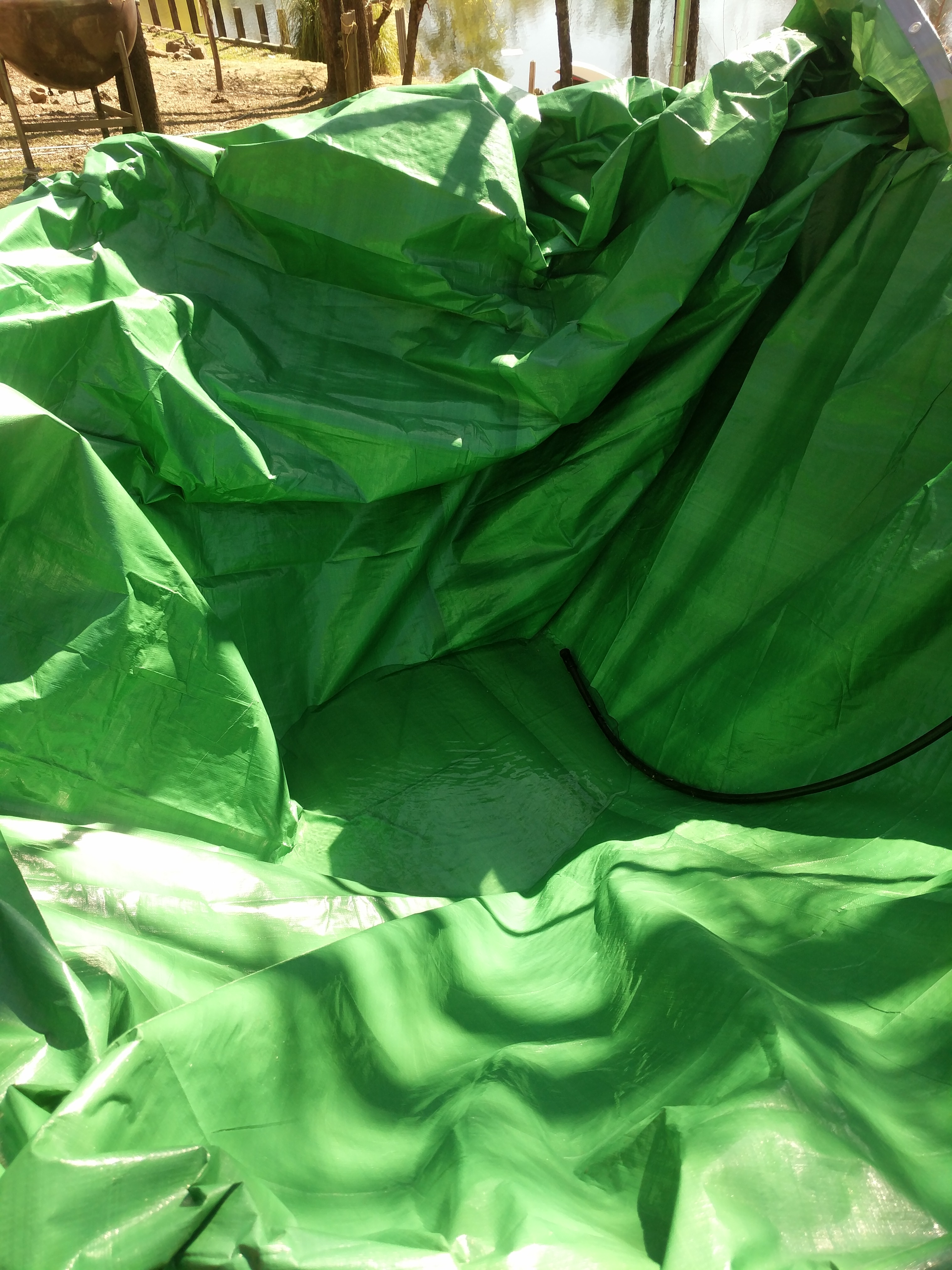 Now that all sharp edges were covered with a thick layer of carpet, a cheap tarp was
added to allow the tank to hold water. At this point, I have probably spent $70 on tank materials.
Now that all sharp edges were covered with a thick layer of carpet, a cheap tarp was
added to allow the tank to hold water. At this point, I have probably spent $70 on tank materials.
Solar powered fill up
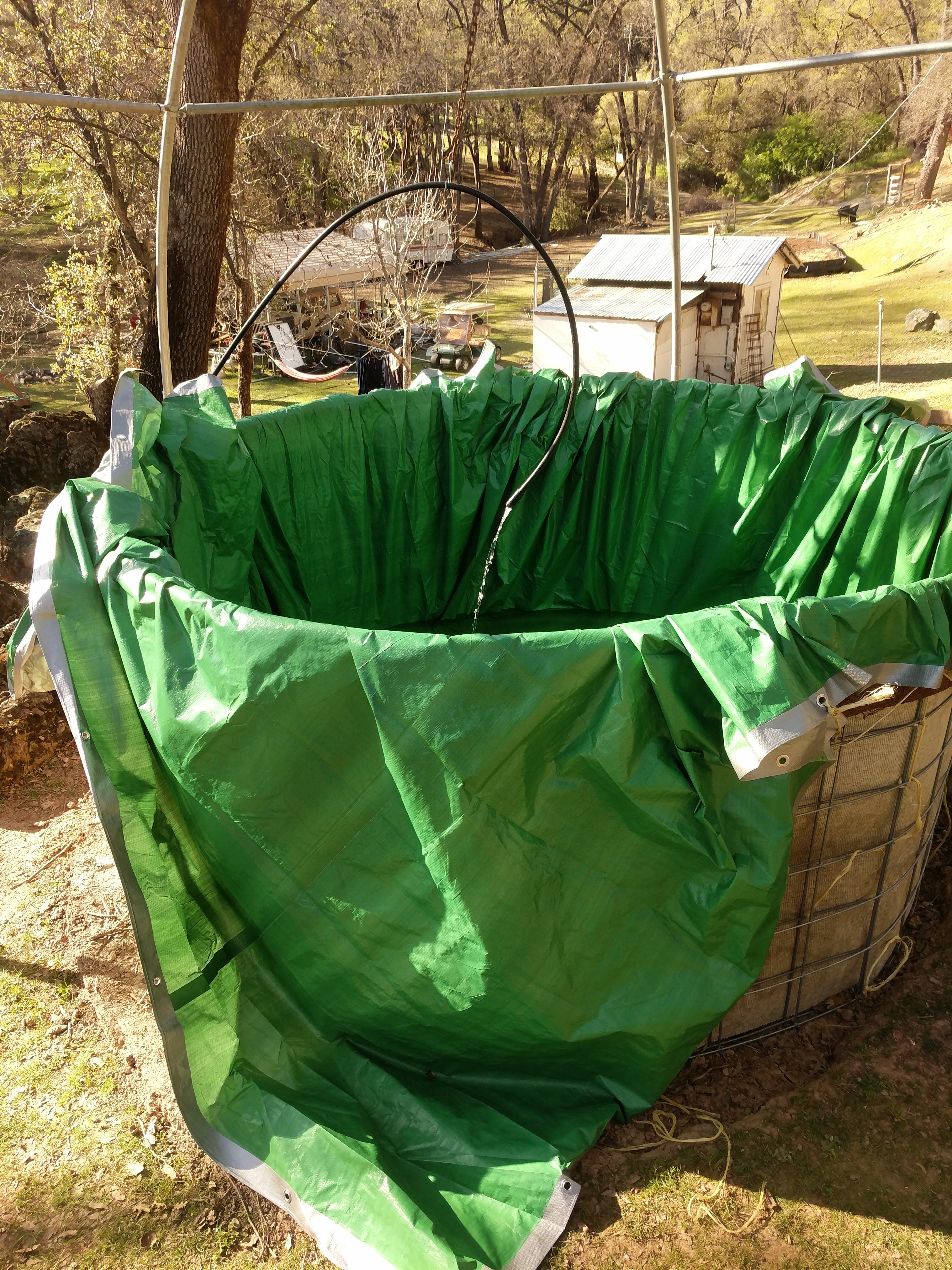 The tank was filled with water pumped from the pond using solar power.
The tank was filled with water pumped from the pond using solar power.
All full
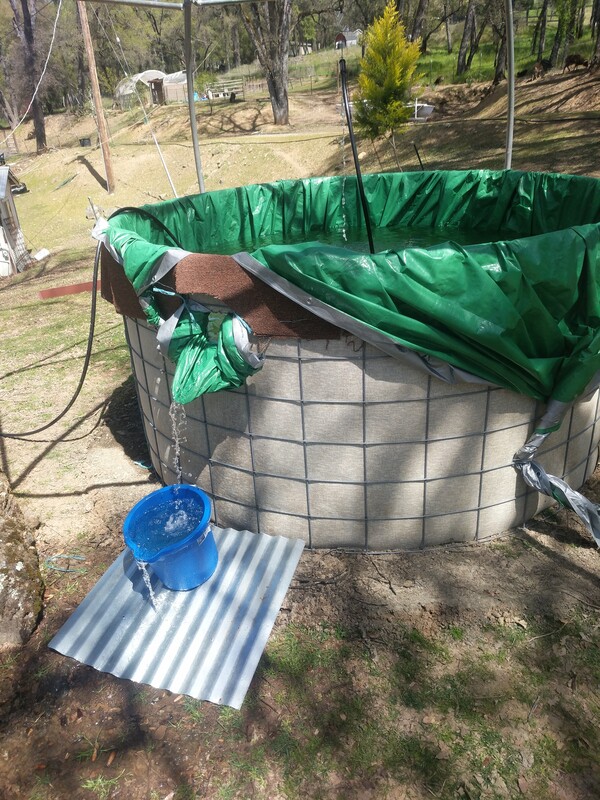
Fish!
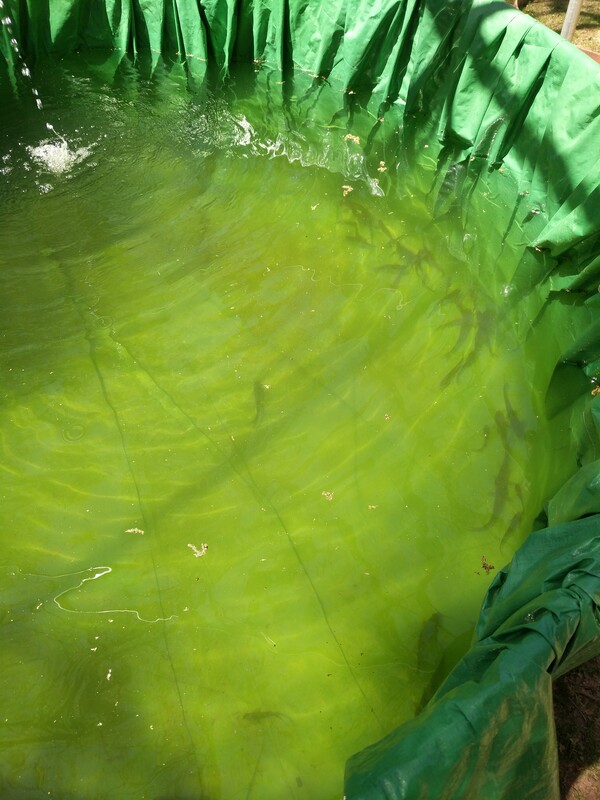 The tank was stocked with about 100 fingerlings from a fish farm in Sacramento.
The tank was stocked with about 100 fingerlings from a fish farm in Sacramento.
Bog Filter to naturally clean the water
 Catfish generate waste, and a bog filter converts that waste into plant nutrients
which are then consumed by plants, which eventually get consumed by sheep.
Catfish generate waste, and a bog filter converts that waste into plant nutrients
which are then consumed by plants, which eventually get consumed by sheep.
More Bog filter
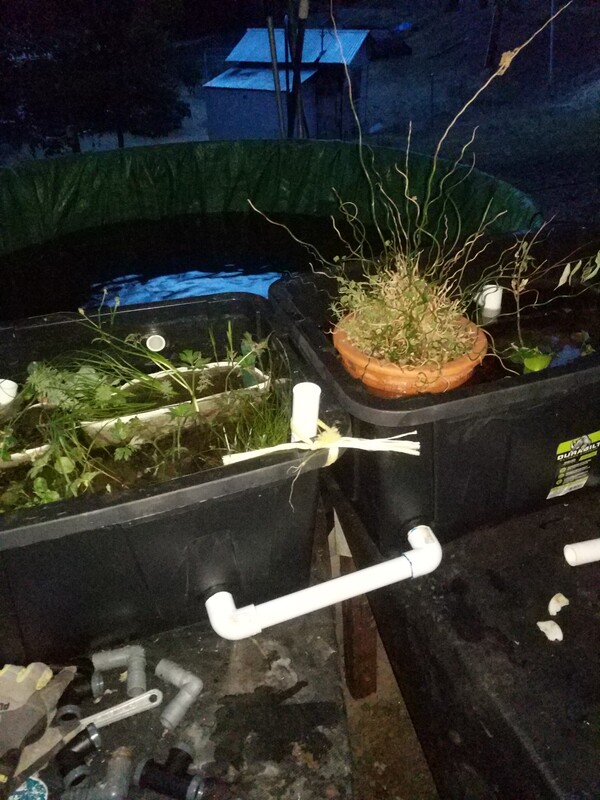 Water from the tank is pumped into container, which is connected by 1" PVC pipe to
another container. Each container is filled with gravel and aquatic plants.
Water from the tank is pumped into container, which is connected by 1" PVC pipe to
another container. Each container is filled with gravel and aquatic plants.
Recirculate and oxygenate
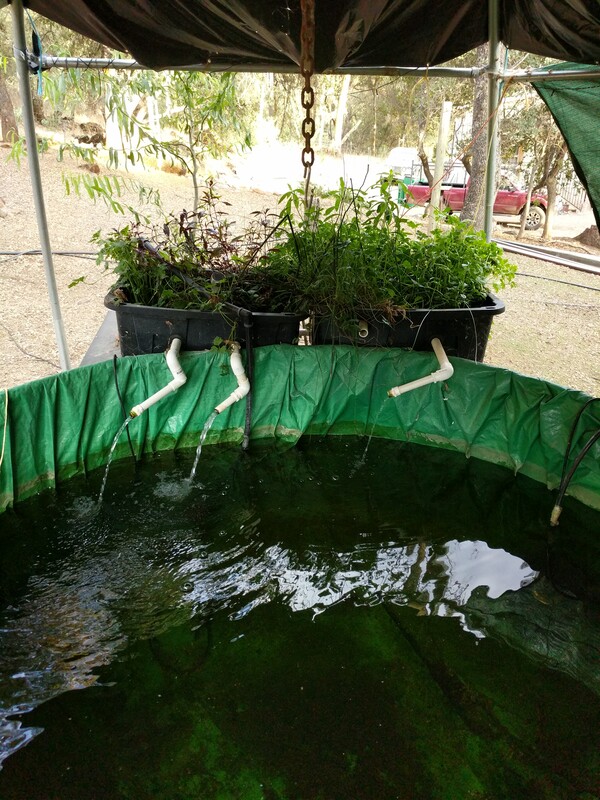 A low wattage water pump moves water from the tank into the filter, and the water
goes back into the tank from 3 filter outlets. When the water falls back into the tank,
it does so at an angle that generates circulation of the tank water. The drop back into the
the tank also helps oxygenate the water for the fish.
A low wattage water pump moves water from the tank into the filter, and the water
goes back into the tank from 3 filter outlets. When the water falls back into the tank,
it does so at an angle that generates circulation of the tank water. The drop back into the
the tank also helps oxygenate the water for the fish.
The finished tank
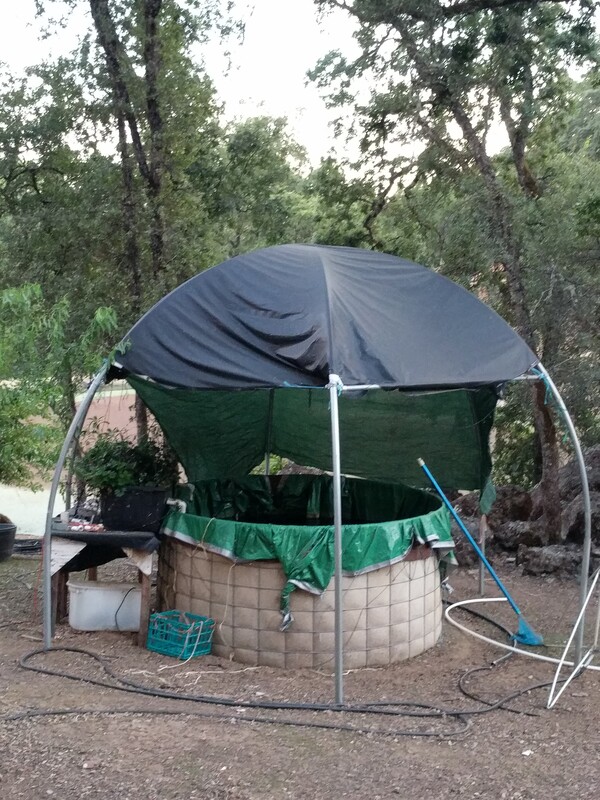 Technically, nothing is ever finished. After this picture was taken, I scored a pool ladder
on Craigslist that I use to climb into the tank on hot days. :)
Technically, nothing is ever finished. After this picture was taken, I scored a pool ladder
on Craigslist that I use to climb into the tank on hot days. :)
The catfish tank has been operational for over a year, yet I have not harvested any catfish. Growth has been slow, probably due to the low water temps. Catfish like warm water, and I haven't been able to the water temp over 75°F.
Oh well, raising fish is a reward in its own right… but damn, I really want a sandwich.
cheers,
jezra
